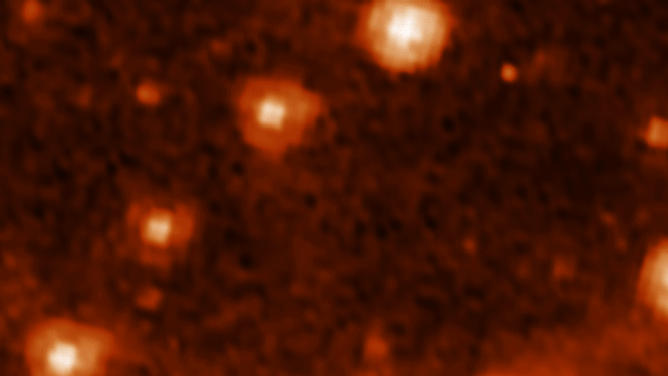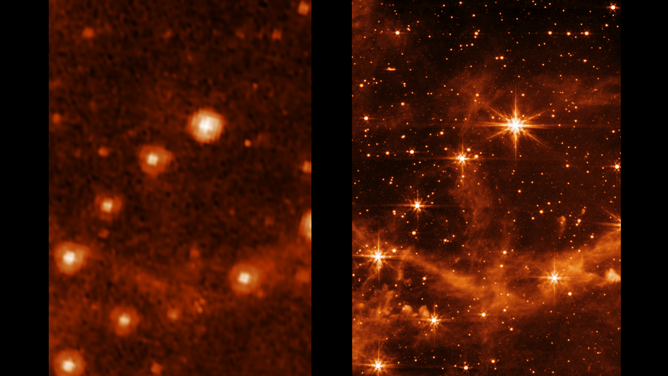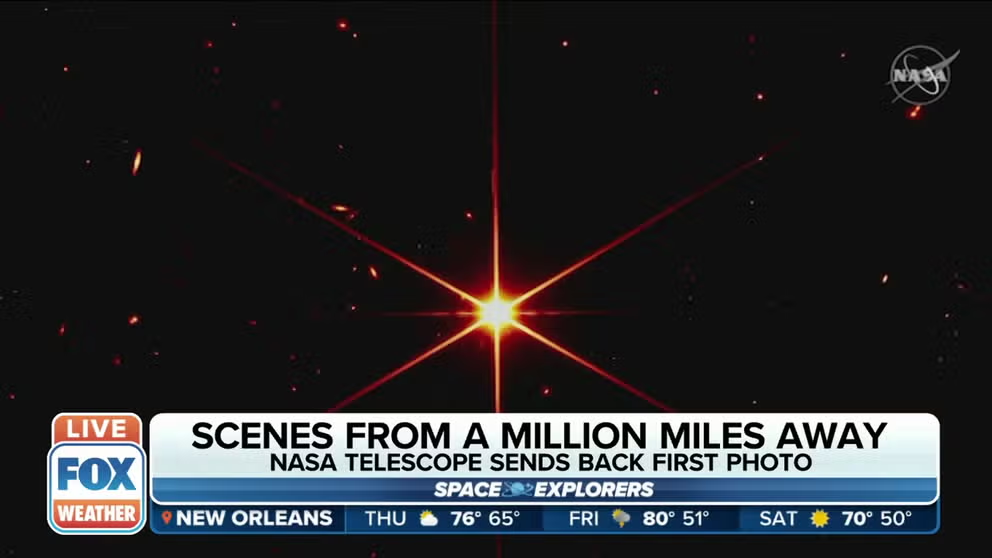James Webb Space Telescope nearly ready to transform our view of the universe
NASA releases 'unbelievably beautiful' images taken by Webb's Mid-Infrared Instrument

The Large Magellanic Cloud, a small satellite galaxy of the Milky Way, is first shown in images taken by NASA's Spitzer Space Telescope and then in infrared images by the James Webb Space Telescope. (Image credit: NASA/ESA/CSA/STScI; Spitzer: NASA/JPL-Caltech)
(NASA)
Scientists have been taking the James Webb Space Telescope for a test drive as they get ready to unleash the most powerful space observatory's instruments on the universe.
On Monday, Webb project scientists with NASA, the Canadian Space Agency, European Space Agency and the Space Telescope Science Institute provided an update on the giant observatory as they prepare to begin science observations this summer.
After launching on Christmas morning, the telescope's 6.5-meter mirror opened, and its tennis-court size sunshield unfolded in space. The telescope is now stationed about 1 million miles from Earth and in the final stages of commissioning.
Michael McElwain, Webb observatory project scientist with NASA’s Goddard Space Flight Center, said there are 1,000 steps in the commissioning phase of the telescope to get it ready for scientific observations, with now only about 200 steps left to complete.
"We're really in the homestretch," McElwain said.
'NAILED IT': JAMES WEBB SPACE TELESCOPE'S FIRST IMAGE IS SOMETHING TO CELEBRATE
After releasing the first image taken by Webb of a star in April, NASA and its international partners shared a new picture on Monday taken during the commissioning of Webb's instruments.
The Webb science team selected the Large Magellanic Cloud, a satellite galaxy of the Milky Way, to test the telescope's Mid-Infrared Instrument or MIRI. The image below shows the same view taken by NASA's now-retired Spitzer Space Telescope's Infrared Array Camera on the left and then using Webb's MIRI on the right.

The Large Magellanic Cloud, a small satellite galaxy of the Milky Way, is first shown in the image on the left taken by NASA's Spitzer Space Telescope and then on the right by the James Webb Space Telescope. The new image was taken by Webb’s coldest instrument: the Mid-Infrared Instrument, or MIRI.(Image credit: NASA/ESA/CSA/STScI; Spitzer: NASA/JPL-Caltech)
(NASA)
"Spitzer taught us a lot, but this is like a whole new world, just unbelievably beautiful," said Marcia Rieke, the principal investigator for Webb's Near-Infrared Camera.
Rieke, an astronomer with the University of Arizona who also worked on the Spitzer telescope, said the team knew Webb's images would be better because it has 18 mirror segments, each larger than Spitzer's single mirror.
"But it's not until you actually see the kind of image that it delivers that you really internalize and go, 'Wow, just think of what we're going to learn,'" Rieke said.
ESA Webb project scientist Chris Evans said Spitzer was limited by spatial resolution. He explained the improved clarity and power of Webb's MIDI cuts through the dust that would be hidden at visible wavelengths.
CLICK HERE TO GET THE FOX WEATHER UPDATE PODCAST
"Until now, we've been limited by the angular resolution with the Spitzer performance, but suddenly you can resolve those into individual stars. You can see all the structures in that image," Evans said. "It's just going to transform our view of local galaxies, like the Magellanic Clouds. That will allow us to study the properties of stars in these different environments that are more similar to the galaxies in the early universe."
James Webb Space Telescope sends back first photo
James Webb Space Telescope's mirrors aligned and sent back the first crisp image of a star.
Webb project scientist Klaus Pontoppidan, with the Space Telescope Science Institute, said next, the public can look forward to the first color images from the telescope, known as early release observations or EROs.
"Their objective is to demonstrate at the end of commissioning to the world and to the public that Webb is fully operational and that it produces excellent results," Pontoppidan said of the EROs. "It's also an opportunity to celebrate the beginning of many years of Webb science."
Pontoppidan said that the images we have seen from Webb so far are mostly of star fields because they are used to calibrate instruments.
The ERO images will showcase the capability of all four Webb science instruments and cover a wide range of areas, from early universe images to galaxies and exoplanets. The EROs should be released in mid-July.
